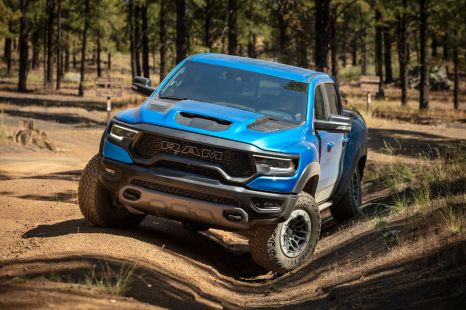

Derek Fung
Revived Ram 1500 TRX could debut on New Year's Day
3 Days Ago
It's no secret the Mazda BT-50 has taken a huge step forward. How does the second-from-top spec XTR stack up in the real world?

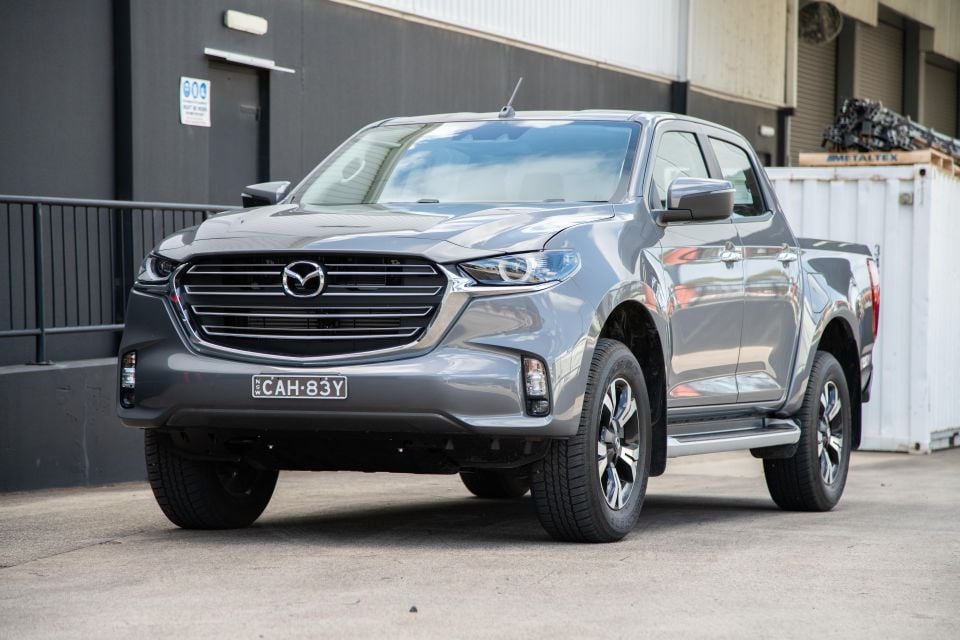

Contributor
New from
$54,950
excl. on-roads

Contributor
New from
$54,950
excl. on-roads


Contributor
New from
$54,950
excl. on-roads

Contributor
New from
$54,950
excl. on-roads
Where expert car reviews meet expert car buying – CarExpert gives you trusted advice, personalised service and real savings on your next new car.
At risk of sounding very New Idea, Mazda and Isuzu are one of 2020’s hottest couples.
Their marriage has seen the creation of the 2021 D-Max and BT-50 utes, two serious challengers to the Ford Ranger and Toyota HiLux in one of Australia’s most competitive vehicle segments.
Although it started life as a twin to the Ford Ranger, the previous-generation BT-50 was comfortably outgunned by its platform mate, not to mention its external rivals, by the time its run ended earlier this year.
The new model wades onto the scene with big goals for Mazda. It’s chasing a 1300 sales per month, which would be a new record.
Does the high-specification XTR have what it takes to battle the best in class? And does it feel any different from the D-Max?
The short answers are yes, and yes.
Eagle-eyed readers will note the car pictured throughout this story is a different colour to the car in the video. Both cars are XTR models, but videography and photography took place on different days.

Pricing for the BT-50 starts at $36,550 before on-road costs, or $39,990 drive-away for ABN holders.
Our tester sits one rung below the range-topping BT-50 GT in the range, and is priced from $57,210 before on-roads for private buyers or $56,490 drive-away if you have an ABN.
Opting for a manual transmission shaves $2500 from the recommended retail price, but few buyers are expected to.
That undercuts the Toyota HiLux SR5 ($59,920 list) and below the Ford Ranger XLT 3.2 ($59,440 list). It sits above the Isuzu D-Max LS-U ($56,900 list) on the pricing tree, although it also has equipment the Isuzu doesn’t for the extra spend.
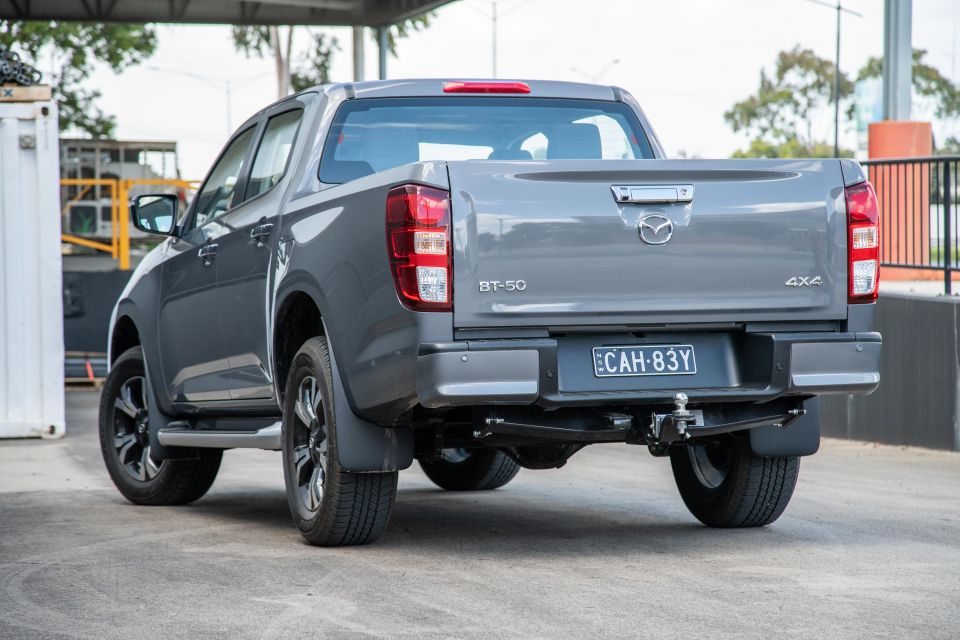
Buy your new car without the stress. It's fast, simple and completely free.

Great service from Travis and team, second time I have used this business would not hesitate to recommend them to anyone
Craig C.
Purchased a Ford Ranger in Sunshine Coast, QLD
CarExpert helped Craig save thousands on his Ford Ranger, now let us save you on your next new car.
Find a dealAs with the whole BT-50 range, the headline act in the XTR is the safety equipment on offer.
Even the base model has forward collision warning, autonomous emergency braking, lane-departure warning, lane-keeping assist, blind-spot monitoring, rear cross-traffic alert, turn assist, traffic sign recognition, and driver attention monitoring.
There’s power-folding mirrors, rain-sensing wipers, and automatic headlights as well.
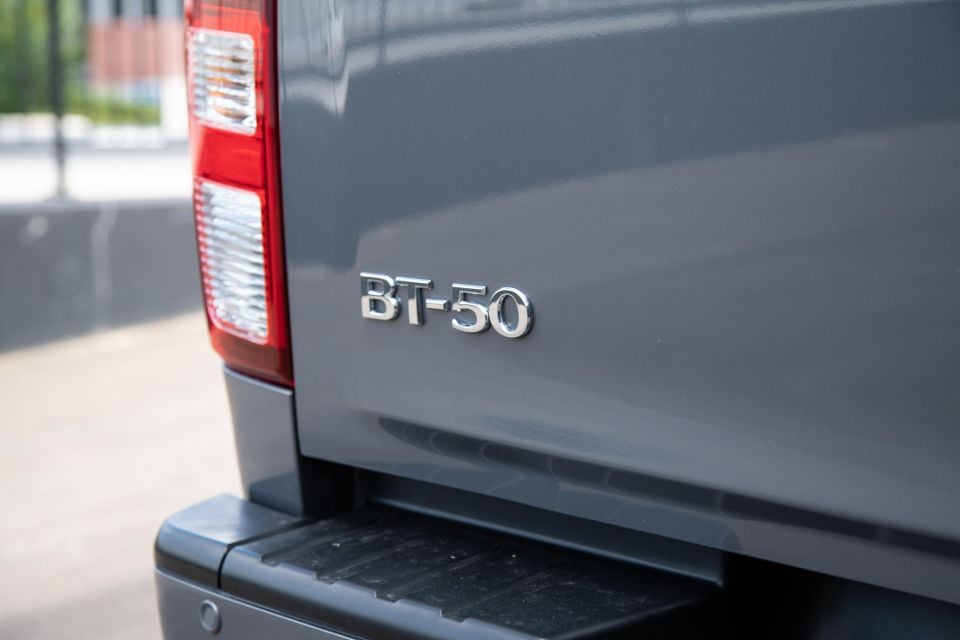
Inside, the seats are trimmed in a houndstooth-style cloth with leather bolstering, and are manually adjustable. There’s dual-zone climate control, rear air vents, two USB pots, a 12V outlet, and an auto-dimming rear-view mirror.
Infotainment comes courtesy of a 9.0-inch touchscreen featuring in-built satellite navigation, wireless Apple CarPlay and wired Android Auto, DAB+ radio, and an eight-speaker audio system. It’s also home to a reversing camera, backed by rear parking sensors.
Externally, the BT-50 XTR features 18-inch alloy wheels, LED headlights (which are standard across the range), fog lights, side steps, and chrome trim add-ons.
The tub is unlined and uncovered as standard, although the extensive Mazda accessories catalogue has options for buyers who want to change that.
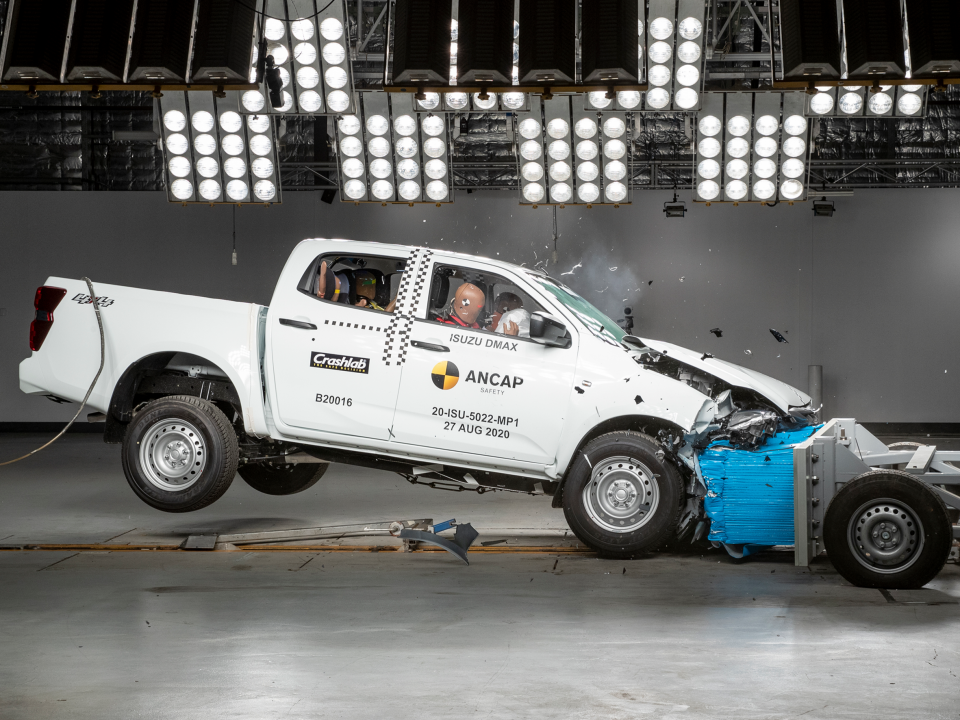
Like the related D-Max, the new BT-50 has been rated five stars by ANCAP under the toughest 2020 protocols.
The rating is based on an adult occupant protection score of 83 per cent, a child occupant protection score of 89 per cent, a vulnerable road user score of 67 per cent, and a safety assist score of 81 per cent.
Along with the usual battery of front and front-side airbags, it features a front central airbag to prevent flailing arms or heads colliding in a side-impact collision.
Standard safety equipment across the automatic BT-50 range includes:
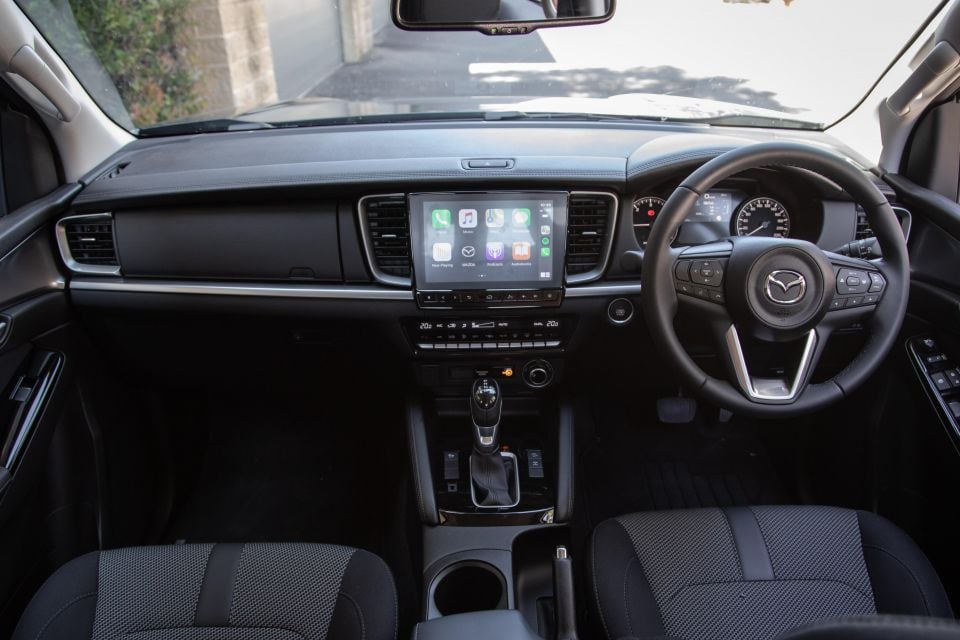
Although it clearly shares its architecture with the D-Max, the BT-50 has a few touches to help set it apart.
There’s a unique design for the top glovebox, new air vent surrounds, a fancy Mazda graphic on startup for the trip computer, and a slightly tweaked steering wheel.
The cloth seat trim is unique compared to the D-Max and there’s lovely soft leather trim atop the dashboard, in keeping with the almost-premium feeling Mazda seeks to imbue in its passenger cars.
The fundamentals are the same as those of the D-Max, which is a good thing. The driving position is excellent for a range of body shapes, with ample seat adjustment and a tilt/reach adjustable steering wheel.
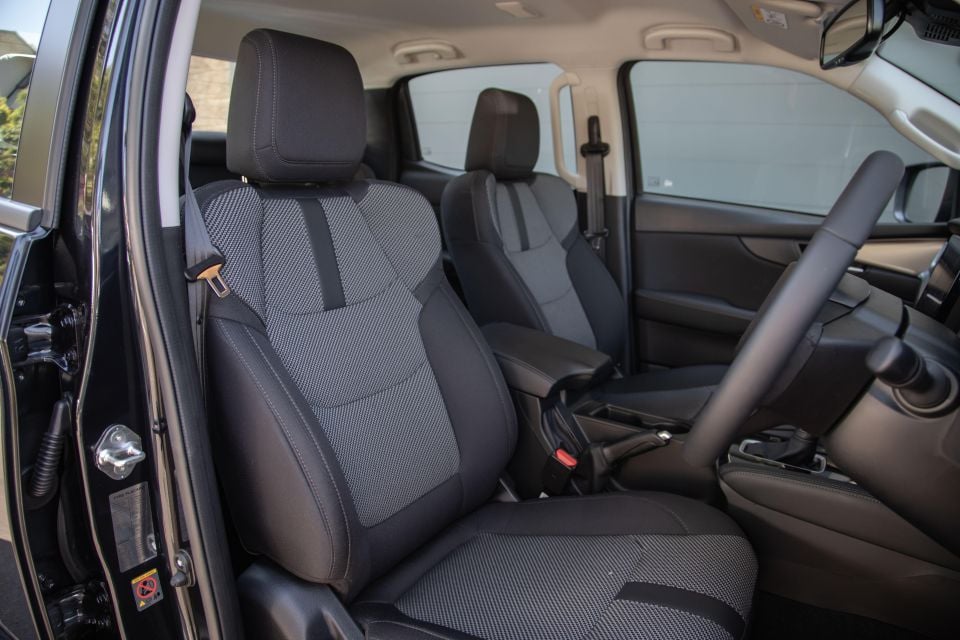
Adjustable lumbar support would be welcome for the seats though, because they’re scalloped out in a way that encourages a slightly sunken, slouched driving position. Otherwise the bolstering is good, and the trim is handsome.
The infotainment system is a massive leap forward from the Alpine head unit fitted to the old BT-50, with more polished graphics and faster responses. It’s quite simple, with a relatively basic menu structure and map graphics, but the inclusion of wireless Apple CarPlay means iOS users can ignore the native software entirely.
For the most part CarPlay was fast to connect and reliable once connected, which isn’t always the case with wireless systems. Wired Android Auto also worked well, although Pixel and Samsung users will no doubt lament the fact their mirroring isn’t wireless.
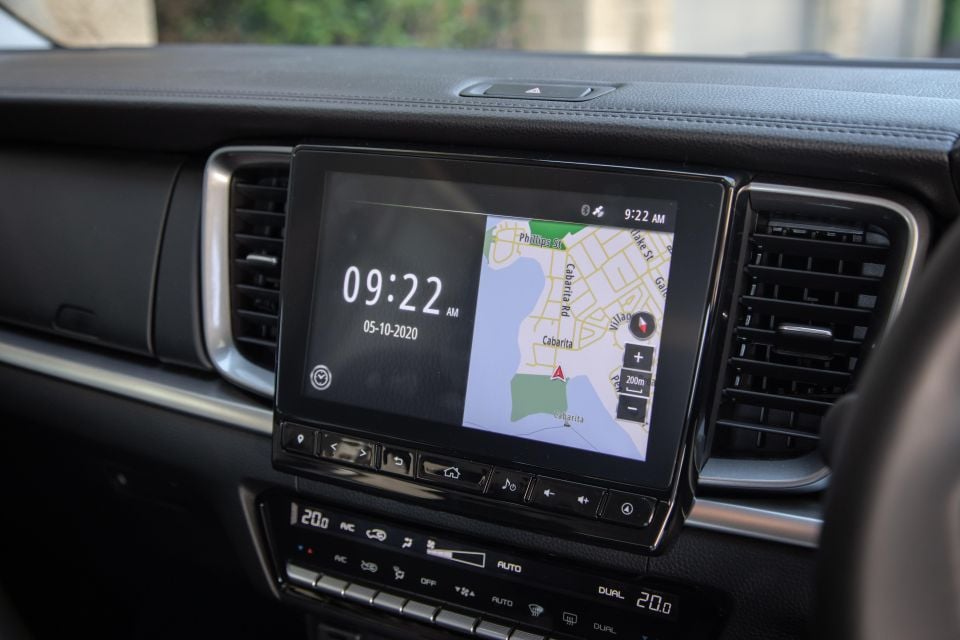
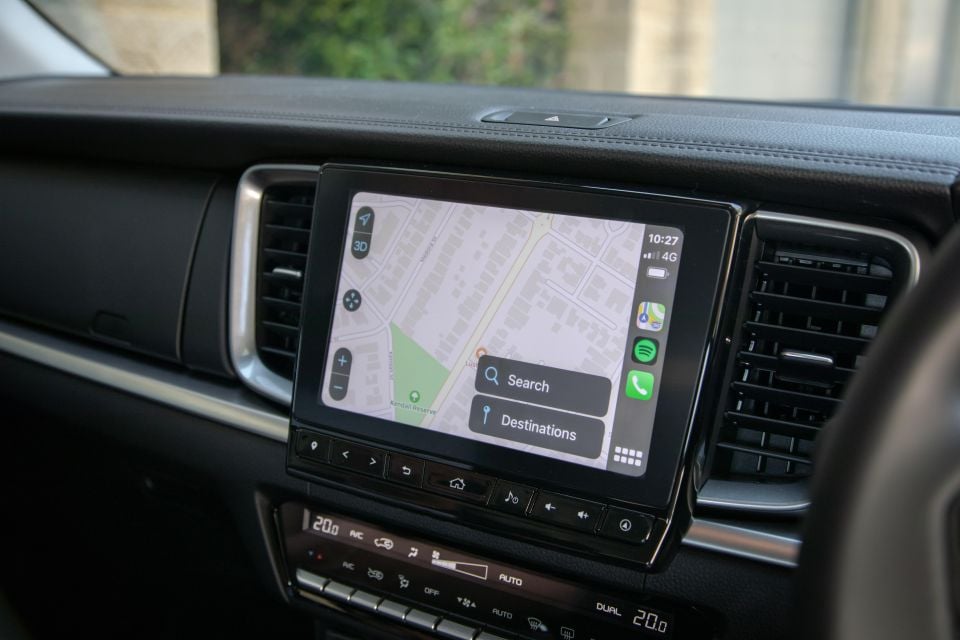
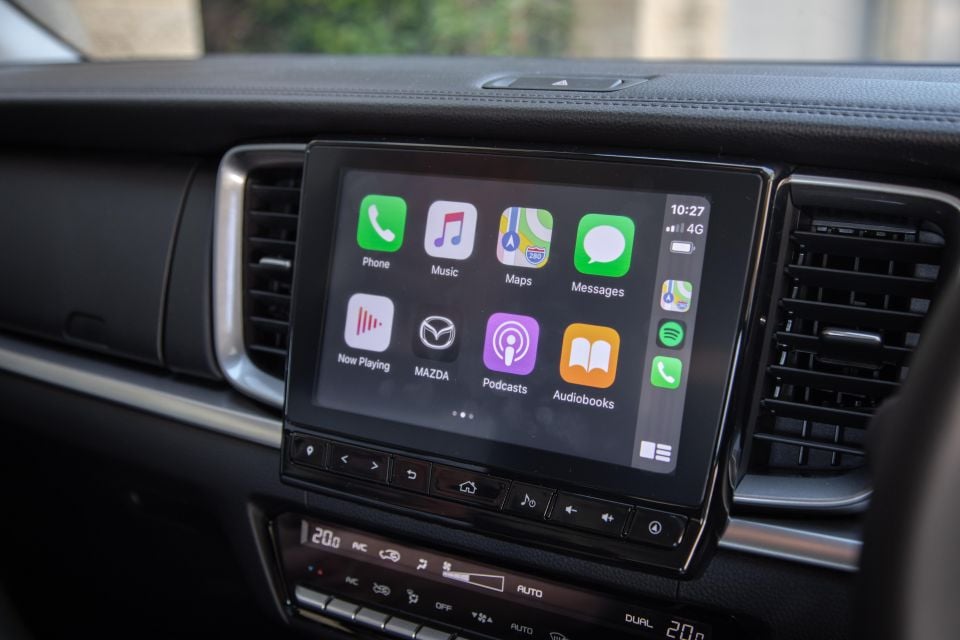
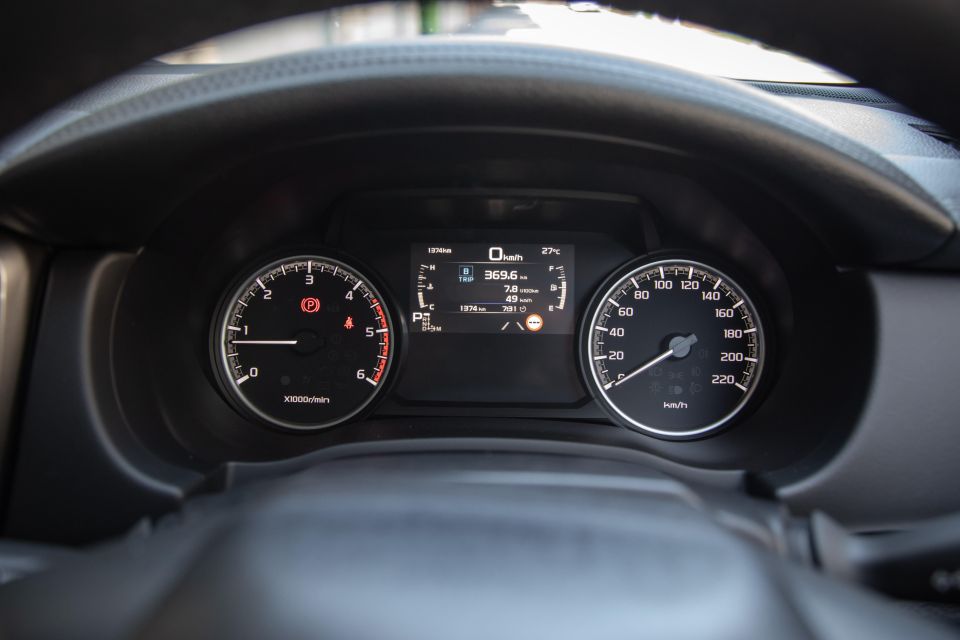
The colour trip computer has all the information you need, but it’s not synced with the infotainment system, meaning if you live in a state with daylight savings there’s two clocks to change.
Mazda has matched Isuzu in offering two deep cupholders on the transmission tunnel and a deep storage bin under the doors, along with a small space for garage clickers or coins to the right of the steering wheel. It hasn’t carried over the pop-out cupholders nestled in the dashboard of the D-Max, though.
Rear passengers are looked after with leg- and headroom thats among the best in the dual-cab class, along with rear air vents and USB power.
The tub measures 1571mm long, 1530mm wide and 490mm tall. There are no tonneau hooks featured around the lip of the tub, but it does feature four tie-down points and a lockable tailgate.
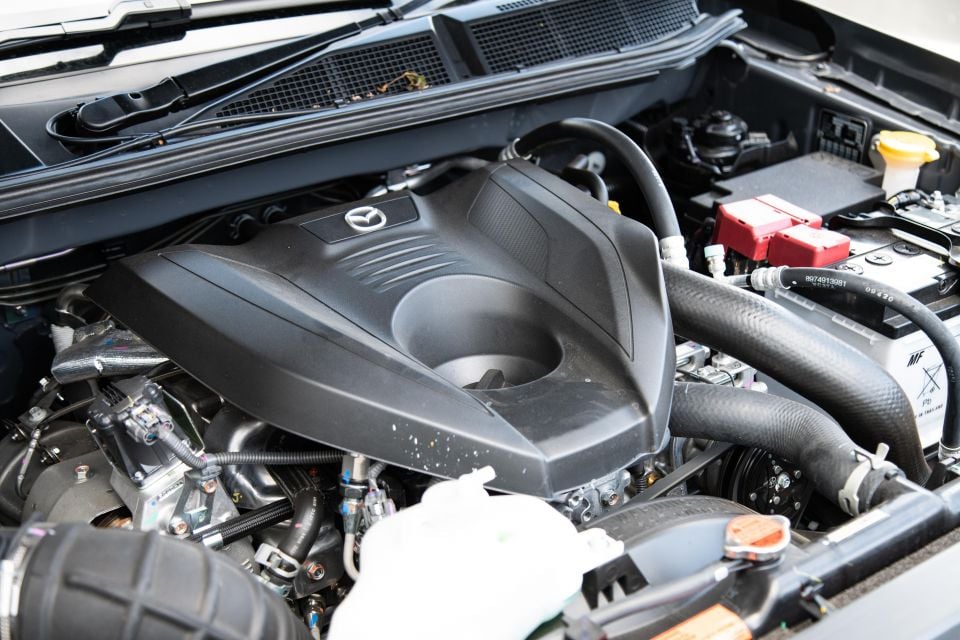
The BT-50 is mechanically identical to the Isuzu D-Max, which means power comes from a turbocharged 3.0-litre four-cylinder diesel engine with 140kW of power and 450Nm of torque.
That’s actually slightly down on the 147kW and 470Nm on tap from the five-cylinder engine used in the previous BT-50, although the new car is lighter. Mazda says even with lower outputs, the new car performs better than its predecessor.
Although a six-speed manual is available, most buyers will opt for the six-speed automatic fitted to our tester. It’s supplied by Aisin, and has been retuned to be more decisive than the six-speeder in the old D-Max.
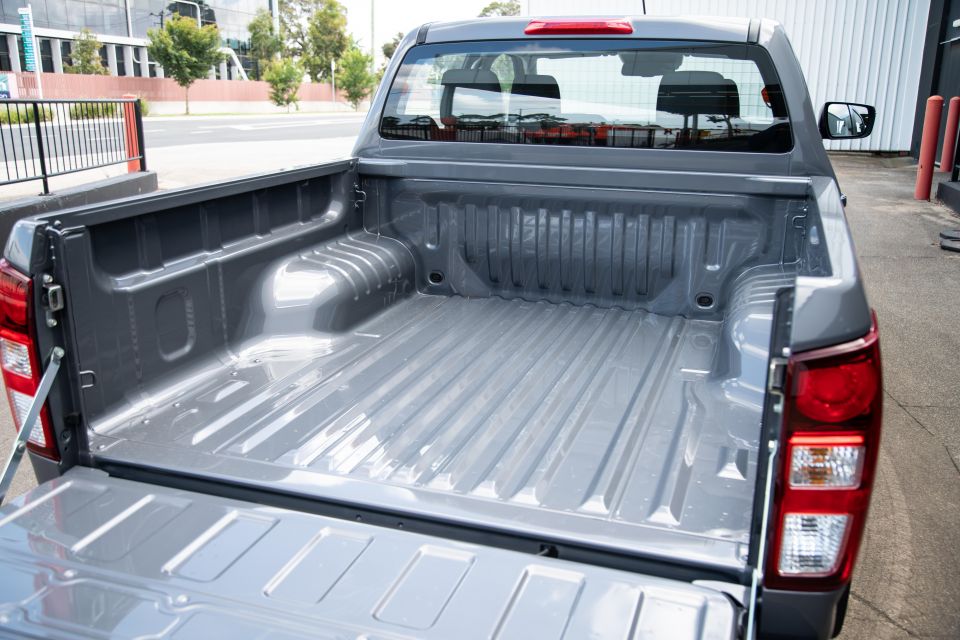
That means less hunting on light throttle, and a greater willingness to lean on the engine’s torque. A switchable four-wheel drive system is standard, along with low range and a locking rear differential.
Claimed fuel economy is 8.0L/100km on the combined cycle.
Braked towing capacity is 3500kg with a maximum downball load, and GCM is 5950kg.
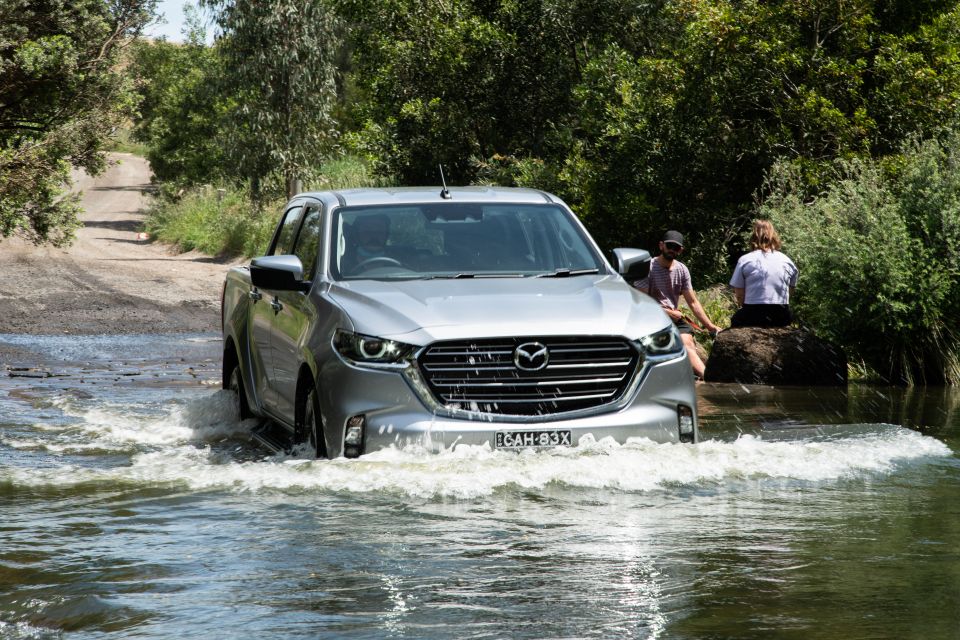
With nothing to separate the BT-50 from the D-Max mechanically – not even tweaked springs or dampers – the driving experience in the BT-50 is a familiar one. It’s also a good one.
Although it’s a big beast with an imposing, bluff nose and broad shoulders, the BT-50 is a cinch to drive in the city. The steering is light at low speeds, and the reversing camera and rear parking sensors make reverse parking simple.
The ride isn’t perfect at low speeds, as is common among dual-cab utes. There’s a hint of choppiness to the ride without a load in the tray but it’s among the most settled utes out there, and doesn’t feel brittle over speed bumps and potholes.
It’s not an SUV on stilts, but the BT-50 walks the tricky tightrope between comfort and payload inherent in these high-end dual-cab utes well.
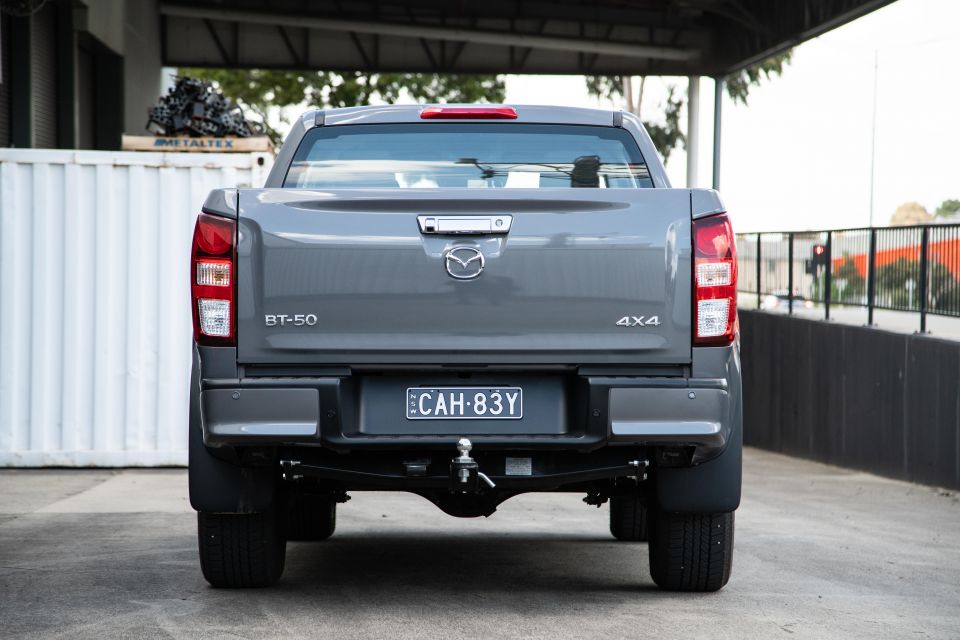
Things settle down as the speed rises, for a relatively relaxed highway ride. It’s comfortable enough on washboard gravel roads, although dropping 300kg into the tray and two burly blokes in the cabin improved things further, as you’d expect.
Noise from the engine, road, and mirrors is well suppressed at 100km/h, making the Mazda an ideal companion for tradies with long distances to travel.
Speaking of the engine, it’s an absolute gem. On paper it’s down on power compared to the bi-turbo 2.0-litre diesel in the Ford Ranger and the 2.8-litre oiler in the latest Toyota HiLux, but in the real world it feels properly punchy.
Torque builds smoothly and arrives at just 1600rpm, and sticks around until 2600rpm for strong punch just above idle. There’s almost no sense of the turbochargers spooling up, nor is there an eye-popping shove in the back – just silky performance in keeping with what you ask for.
It’s paired well with the reworked six-speed torque converter automatic transmission, which is far more decisive than the unit in the old D-Max. It’s happier to stick in a tall gear and lean on the low-down torque than before, and when it does change down the shifts are well-executed.
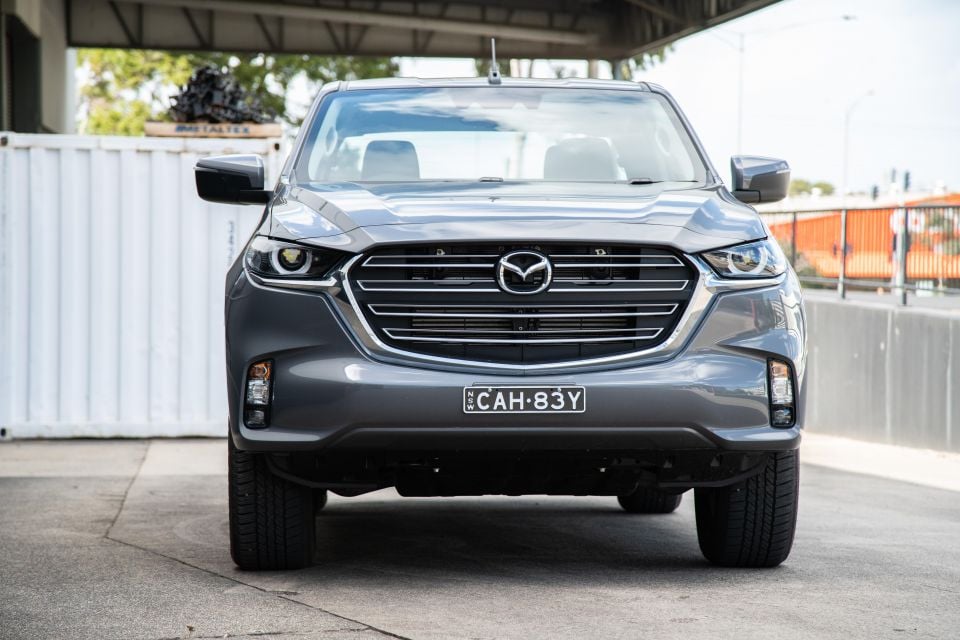
You can take charge with a sequential-style shift mode, but it’s rarely necessary.
Off the beaten track, the BT-50 comfortably handled a series of basic challenges, including a small water crossing and gravel climbs.
The rear differential lock (a notable omission from the previous-generation D-Max) will make serious off-roaders happy, and the world of aftermarket manufacturers is doubtless already working on lift kits, bash plates, and snorkels to help take you deeper into the unknown.
Mazda also has an extensive accessory catalogue, which it launched alongside the BT-50 earlier this year.
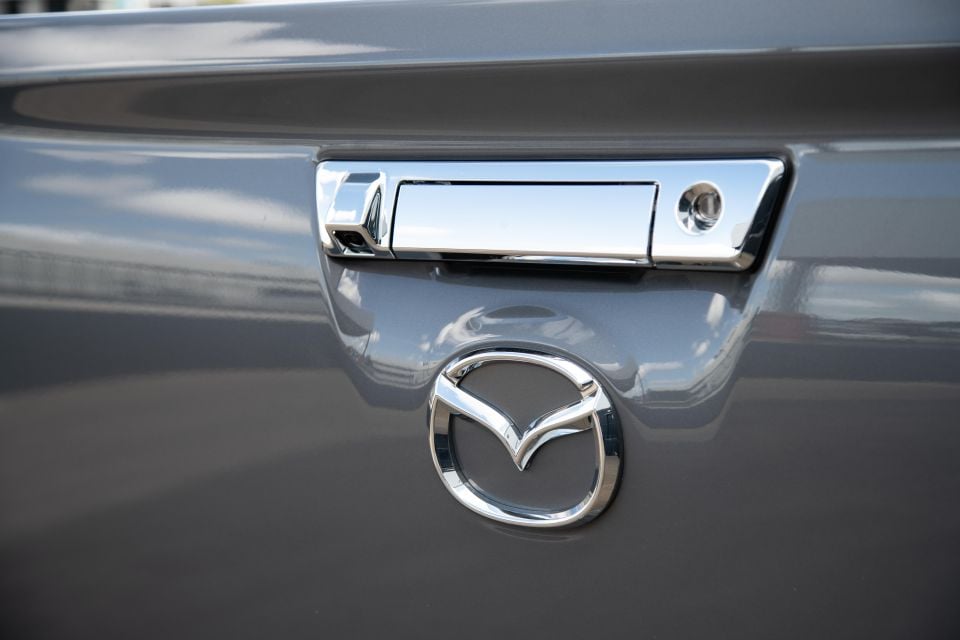
Where expert car reviews meet expert car buying – CarExpert gives you trusted advice, personalised service and real savings on your next new car.
Mazda backs the BT-50 with a five-year, unlimited-kilometre warranty and five years of roadside assist.
Servicing is required every 12 months or 15,000kms, whichever comes first.
Pricing for all BT-50 4×4 automatic variants are $418, $390, $673, $496, and $312 for the first five services through to 75,000kms.
Like the Isuzu D-Max with which it shares its chassis and drivetrain, the BT-50 is a thoroughly well-sorted ute. The standard suite of safety equipment is extensive, it’s sorted on the road, and has a far more modern cabin than its predecessor.
There’s plenty to like about the BT-50 compared to its stablemate from Isuzu. The cabin does have a more Mazda-ish feel, and the exterior styling helps it stand out among the dual-cab crowd.
The XTR sits in an interesting spot for value, given it only undercuts the range-topping BT-50 GT by just $2780 on list price and just $3000 on ABN drive-away price.
Although that saving isn’t to be sneezed at, it’s not hard to imagine plenty of people stumping the extra cash for niceties such as leather trim.
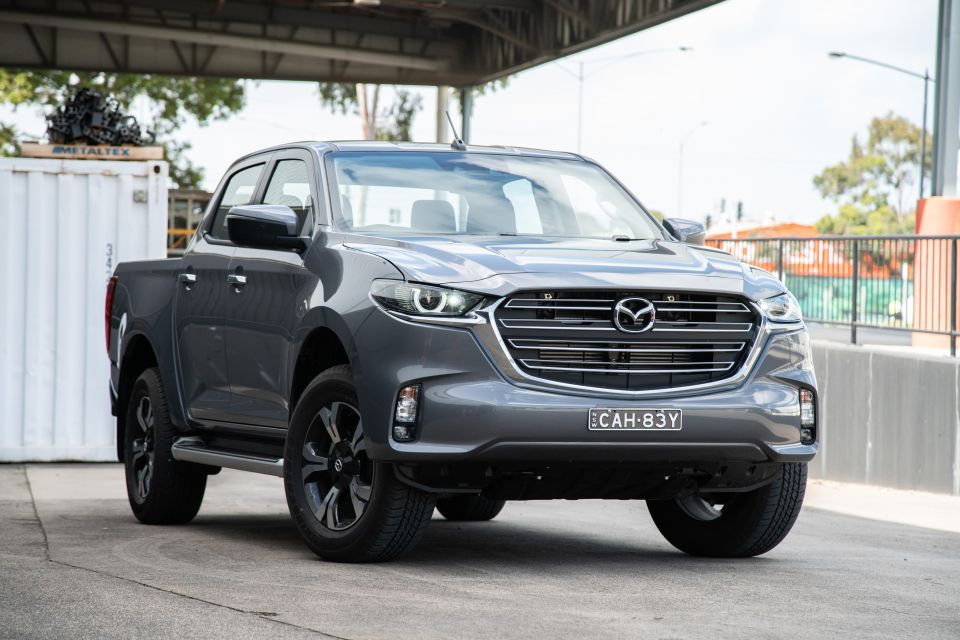
Click the images for the full gallery
MORE: Mazda BT-50 news and reviews MORE: Mazda news and reviews
Where expert car reviews meet expert car buying – CarExpert gives you trusted advice, personalised service and real savings on your next new car.
Scott Collie is an automotive journalist based in Melbourne, Australia. Scott studied journalism at RMIT University and, after a lifelong obsession with everything automotive, started covering the car industry shortly afterwards. He has a passion for travel, and is an avid Melbourne Demons supporter.


Derek Fung
3 Days Ago
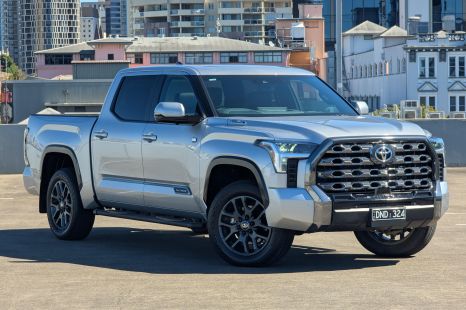

Damion Smy
6 Days Ago
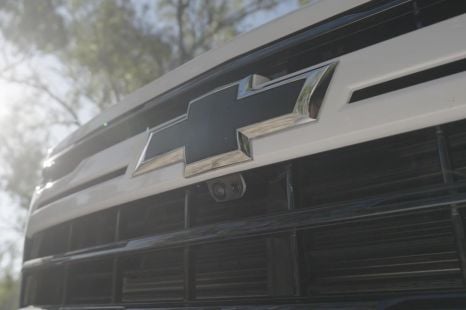

Ben Zachariah
8 Days Ago


James Wong
14 Days Ago
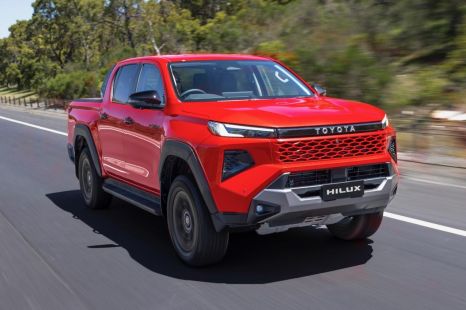

Ben Zachariah
15 Days Ago
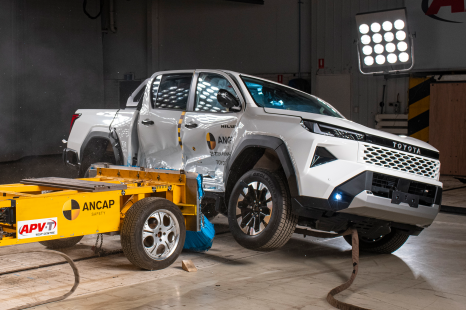

William Stopford
15 Days Ago